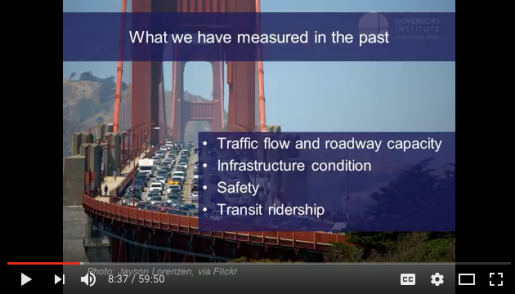
Authors
Publication Date
February 2017
Categories
Tags
Resource Type
Upcoming public events - join us!
The Why and How of Measuring Access to Opportunity Webinar
Transportation systems link people to their daily destinations as well as broader opportunity. And transportation agencies across the country are increasingly interested in measuring how well their systems do this. Many practitioners are not sure where to start on that ambitious goal, but a new guide from the Governors’ Institute on Community Design is designed to show them how.
The Why and How of Measuring Access to Opportunity: A Guide to Performance Management is a guidebook on the data, tools, and methodologies transportation officials need to measure access to opportunity, as well as how to integrate these measurements into their planning and investment decisions. The guidebook provides background on the changing priorities in transportation performance management, how some transportation agencies are already incorporating measures of access into their programs, and discusses the data and tools available to support measuring it. This guidebook might also be useful to elected and civic leaders, policymakers, and stakeholders who wish to work with transportation agencies to address these important priorities.
As part of the release of this resource, we hosted an online conversation to review the content of the guidebook, discuss the changing state of practice in performance management, and answer questions.
This resource was informed by an Advisory Panel made up of federal, state, and local practitioners, as well as two workshops on performance management and destination access.
The Governors’ Institute on Community Design is a partnership of the U.S. Environmental Protection Agency, U.S. Department of Transportation, and Smart Growth America. The Governors’ Institute was created in 2005 by the National Endowment for the Arts and was modeled on the very successful Mayors’ Institute on City Design.
This material is based upon work supported by the Federal Highway Administration and the U.S. Environmental Protection Agency under a cooperative agreement. Any opinions, findings, and conclusions or recommendations expressed in this publication are those of the author(s) and do not necessarily reflect the view of the Federal Highway Administration or the U.S. Environmental Protection Agency.